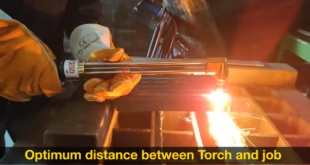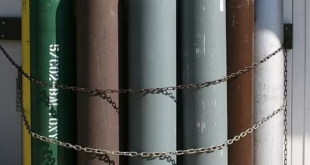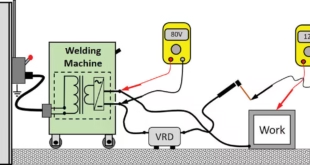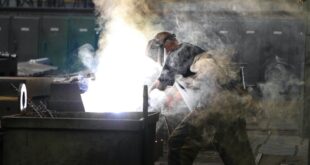Welding Fumes and Gases: Understanding the Hazards and How to Protect Yourself
Welding fumes and gases are by-products of welding processes and can pose significant health risks if not managed properly. These fumes consist of tiny metallic particles suspended in the air, while gases may include harmful substances like carbon monoxide, ozone, and nitrogen oxides. In this comprehensive guide, we’ll explore what welding fumes and gases are, their associated health risks, and effective strategies to minimize exposure.
What Are Welding Fumes and Gases?
Welding fumes and gases are generated when metals are heated above their melting points, creating vapors that condense into fine particles. These fumes are a complex mixture of metallic oxides, silicates, and fluorides, while the gases often result from the interaction between heat and the surrounding air.
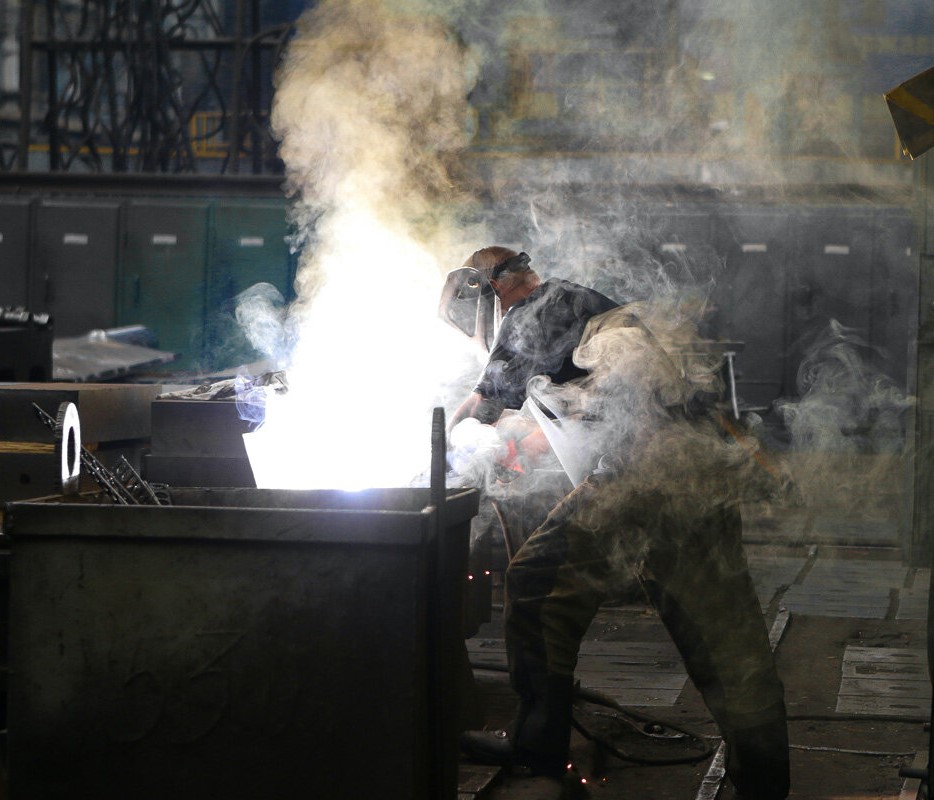
Definition of Welding Fumes
Welding fumes are microscopic particles produced when the metal being welded vaporizes and cools rapidly in the air. These particles are often invisible to the naked eye but can be easily inhaled, leading to respiratory issues and other health complications. The specific composition of welding fumes varies depending on the materials being welded and the process used.
Common Gases Produced During Welding
Different welding processes generate various gases, many of which are harmful if inhaled. Some of the most common gases produced include:
- Carbon Monoxide (CO): This gas is colorless and odorless, making it difficult to detect. Exposure to carbon monoxide can cause symptoms such as dizziness, nausea, and confusion, and in severe cases, it can lead to unconsciousness or even death due to oxygen deprivation.
- Ozone (O3): Ozone is created when the ultraviolet (UV) radiation from welding interacts with oxygen. High concentrations of ozone can irritate the respiratory tract, causing symptoms such as coughing, shortness of breath, and chest pain.
- Nitrogen Oxides (NOx): These gases are formed at high temperatures when nitrogen in the air reacts with oxygen. Nitrogen oxides can irritate the lungs and may aggravate existing respiratory conditions like asthma. Long-term exposure can lead to chronic respiratory diseases.
Health Risks Associated with Welding Fumes and Gases
Welding fumes and gases can cause various health effects, which can range from temporary symptoms to long-term chronic conditions. The severity of these risks depends on factors such as the level and duration of exposure, the type of welding, and the materials involved.
Short-Term Health Effects
Inhaling welding fumes can cause immediate symptoms, such as:
- Irritation of the eyes, nose, and throat
- Dizziness and headaches
- Nausea and vomiting
- Shortness of breath
These symptoms can usually be relieved by stepping away from the welding area and getting fresh air. However, in cases of high exposure, these symptoms can worsen and require medical attention.
Long-Term Health Risks
Prolonged exposure to welding fumes can result in serious health complications, including:
- Respiratory Diseases: Chronic exposure to welding fumes increases the risk of developing respiratory conditions like bronchitis, asthma, and emphysema. Over time, these diseases can lead to reduced lung function and difficulty breathing.
- Metal Fume Fever: Metal fume fever is a temporary flu-like illness caused by inhaling certain metal oxides, such as zinc oxide, which is common in galvanized steel. Symptoms include fever, chills, muscle aches, and fatigue, and they typically appear a few hours after exposure.
- Chronic Lung Conditions: Long-term exposure to welding fumes is linked to chronic obstructive pulmonary disease (COPD), which causes persistent airflow limitation, and lung cancer, particularly in cases involving stainless steel welding due to hexavalent chromium exposure.
Factors Affecting Fume and Gas Exposure
The extent of exposure to welding fumes and gases depends on several factors. Understanding these factors can help welders take appropriate precautions to minimize their risk.
Types of Materials Used
The metals and coatings involved in welding influence the type and amount of fumes generated. For instance:
- Stainless Steel contains chromium, which produces hexavalent chromium when welded, a known carcinogen.
- Galvanized Steel is coated with zinc, which produces zinc oxide fumes when heated, leading to metal fume fever.
Welding Processes and Techniques
Different welding methods generate varying levels of fumes. For example:
- Gas Tungsten Arc Welding (GTAW) produces fewer fumes but higher levels of certain gases like nitrogen oxides.
- Shielded Metal Arc Welding (SMAW) produces more fumes and is commonly associated with higher exposure to metal particles.
Ventilation and Work Environment
Enclosed or poorly ventilated workspaces increase the concentration of fumes and gases, heightening the risk of inhalation. Factors such as the size of the workspace, air circulation, and proximity to the welding arc also play a role in determining exposure levels.
Symptoms of Welding Fume Exposure
Early identification of symptoms related to welding fume exposure can prevent more serious health issues. It’s important to know both the immediate and delayed symptoms that may indicate exposure.
Immediate Symptoms
Welders should be aware of symptoms like:
- Irritated eyes, nose, or throat
- Headaches and dizziness
- Nausea or vomiting
- Coughing and difficulty breathing
If you experience any of these symptoms, it’s essential to stop welding, move to a well-ventilated area, and seek fresh air.
Delayed Symptoms and When to Seek Medical Attention
Some symptoms, such as respiratory issues, chest pain, or persistent cough, may appear hours or even days after exposure. If symptoms persist or worsen, it’s crucial to seek medical attention to rule out more severe health effects.
Safety Standards and Regulations
Various organizations, such as OSHA and the American Welding Society (AWS), have established safety guidelines and permissible exposure limits (PELs) to help control exposure to welding fumes and gases.
OSHA Guidelines
The Occupational Safety and Health Administration (OSHA) has set PELs for various substances found in welding fumes, such as hexavalent chromium and lead. These limits specify the maximum amount of a substance a worker can be exposed to over a specific period. OSHA also requires employers to implement engineering controls, such as ventilation, to keep exposure within safe limits.
International Standards
International standards, such as those set by the European Union’s REACH program, regulate hazardous substances to minimize health risks. These standards may vary by country, so it’s essential for welders working internationally to be familiar with local regulations.
Importance of Regular Health Screenings
Regular health check-ups allow for early detection of any adverse effects from welding fume exposure, particularly for chronic conditions. Screenings may include lung function tests, blood tests, and chest X-rays to monitor respiratory health over time.
How to Control and Reduce Exposure
Implementing control measures can significantly reduce the risks associated with welding fumes. These measures include proper ventilation, using appropriate PPE, and following safe welding practices.
Proper Ventilation Systems
Effective ventilation can reduce the concentration of harmful fumes. There are two primary types of ventilation systems:
- Local Exhaust Ventilation (LEV): LEV systems capture fumes at the source and remove them from the work area, preventing them from spreading.
- General Ventilation: This includes using fans and open windows to circulate air throughout the workspace, diluting the concentration of fumes.
Personal Protective Equipment (PPE)
Using PPE is essential to protect against inhalation of harmful particles and gases. Key PPE items include:
- Respirators and Masks: Respirators filter out harmful particles, and some types also filter gases. It’s essential to select the appropriate respirator based on the specific fumes produced.
- Eye and Face Protection: Welding helmets with filters not only protect against UV radiation but also help reduce the risk of inhaling fumes.
Best Practices
Creating a safe work environment involves taking preventive measures before, during, and after welding.
Pre-Welding Checks
Inspect welding equipment, ensure that ventilation systems are functional, and confirm that PPE is available and in good condition. It’s also a good idea to review the materials being welded for any hazards.
Continuous Monitoring of Air Quality
Using air quality monitors can help detect harmful gases and particles in real time, allowing for immediate adjustments if necessary. Monitoring systems are particularly useful in confined spaces where fumes can quickly reach dangerous levels.
Safe Handling and Storage of Materials
Store hazardous materials in a well-ventilated area away from welding stations. Proper labeling and storage can prevent accidental exposure and reduce fire hazards.
Innovations in Welding to Minimize Fume Generation
Advancements in welding technology have led to methods and equipment that produce fewer fumes, helping to create a safer work environment.
Low-Fume Welding Techniques
Certain techniques, such as laser welding and plasma cutting, generate fewer fumes as they use lower temperatures or are more precise, reducing the amount of vaporized metal.
Advancements in Welding Equipment
Modern welding equipment often includes built-in fume extraction systems, which capture fumes at the source. Automated welding options can also minimize direct exposure by reducing the amount of time a welder spends near the arc.
FAQs
What are the most harmful gases produced in welding?
Ozone, nitrogen oxides, and carbon monoxide are among the most harmful gases produced during welding. These gases can cause respiratory issues and other health problems if inhaled.
How can I protect myself from welding fumes?
To protect yourself, use proper ventilation, wear appropriate PPE like respirators, and follow established safety guidelines for welding.
What are the long-term effects of welding fume exposure?
Long-term exposure can lead to chronic respiratory diseases, metal fume fever, COPD, and even lung cancer, depending on the materials involved in the welding process.
Are there welding techniques that produce fewer fumes?
Yes, techniques like laser welding and low-fume processes produce fewer fumes. Using modern welding equipment with built-in fume extraction systems can also help minimize exposure.
How often should welders have health check-ups?
Welders should have regular health screenings, ideally annually, to monitor for any adverse effects from fume exposure and ensure early detection of potential issues.
Conclusion
Understanding the risks associated with welding fumes and gases is crucial for maintaining a safe work environment. By following safety guidelines, using appropriate PPE, and staying informed about innovations in welding technology, welders can significantly reduce their exposure to harmful substances. Remember to recognize the symptoms of fume exposure, practice proper ventilation, and participate in regular health screenings for a long and healthy welding career.
 Welding of Welders All about Welding and Welders
Welding of Welders All about Welding and Welders
